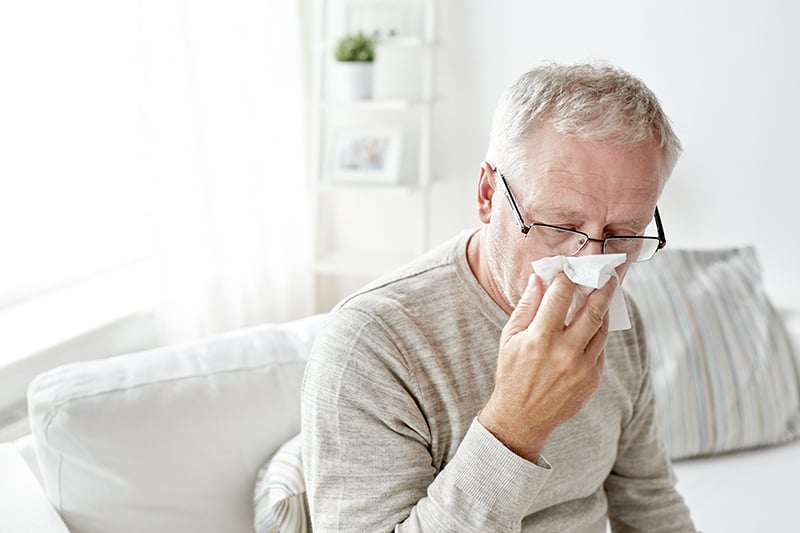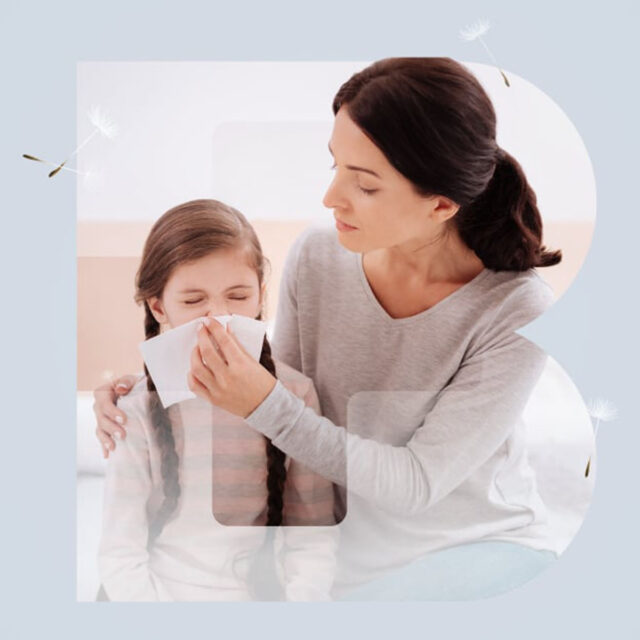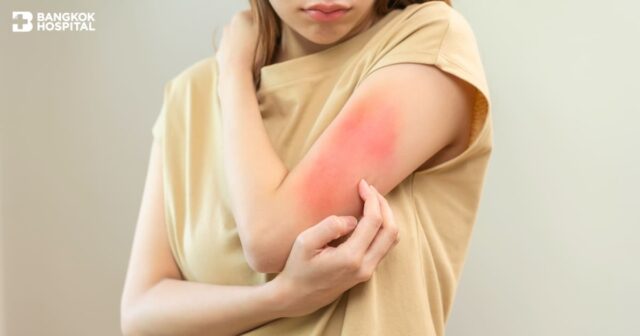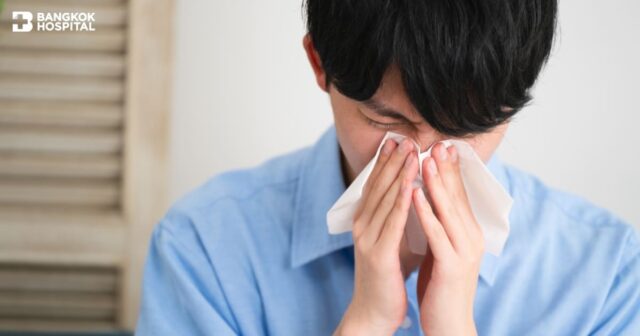Influenza (flu) and COVID-19, the pandemic illness caused by SARS-CoV-2, are both contagious respiratory diseases, affecting the lungs and respiratory symptoms. Although COVID-19 and flu share some similar symptoms, COVID-19 appears to spread more easily than flu and causes more serious complications in some people. In addition, it can also take longer before people with COVID-19 to exhibit their symptoms. Besides flu, allergies and common cold also pose certain similar symptoms of COVID-19, ranging from mild to severe. The similarity of symptoms makes them hard to diagnose distinctively. Nevertheless, there seem to be some differences that can be used to distinguish COVID-19 from flu, allergies and common cold. Regardless of the cause of symptom, if abnormal sign arises, immediate medical attention must be sought.
Allergies
Allergies develop when the immune system excessively reacts to foreign substances, known as allergens, such as pollen, pet dander and certain foods. After exposure to an allergen, the immune system produces antibodies that identify a particular allergen as harmful substance. When a person comes into contact with the allergen, the reaction triggered by the immune system can affect different systems, including skin, airways and digestive system. Nonetheless, the severity of allergies widely varies from person to person, extending from minor irritation to anaphylaxis which is a potentially life-threatening emergency condition. Depending specific type of allergies, most common symptoms of allergies are skin rash, itching of the nose, eyes or roof of the mouth, sneezing, runny nose and nasal congestion. In severe cases, chest discomfort, shortness of breath or breathing difficulties might also present along with other symptoms.
In regards to current studies, there is no clinical evidence yet obtained to confirm that patients who have allergies as their underlying condition are more susceptible to COVID-19 infections than general populations. However, if patients with allergies become infected with COVID-19, the chance of developing serious complications substantially rise while their preexisting symptoms can be exacerbated.
Symptoms of allergies
Allergic reactions caused by various substances are widely different among individuals. Common symptoms often include:
- Sneezing
- Watery, red, swollen or itchy eyes
- Nasal congestion, stuffy, itchy or runny nose
- Skin rash
- Swelling of the lips, tongue, face or throat
- Wheezing or shortness of breath
To prevent allergies, known triggers must be avoided at all times. Medications, such as oral tablets, nasal sprays and nasal irrigation should be regularly used as proscribed. If symptoms flare up, it is highly advised to instantly seek medical assistance.
Common cold
The common cold is a common viral infection of the upper respiratory tract (nose and throat). Although several types of viruses can cause a common cold, rhinoviruses are the most common pathogens. The common cold is typically found during seasonal changes. It is usually harmless with mild to moderate severity. Since it appears to be self-limiting, most of patients can get a full recovery within a week. The common cold is primarily transmitted through nasal discharge, saliva and sputum. The viruses can spread through droplets in the air when a sick person coughs or sneezes. It also spreads by hand-to-hand contact by sharing contaminated objects and touching eyes or noses.
Symptoms of common cold
- Nasal congestion or stuffy nose
- Runny nose
- Productive cough with mucus or phlegm
- Sneezing
- Sore throat
- Hoarseness
- Low-grade fever
- Slight body aches or a mild headache
In adults (without preexisting respiratory condition), common symptoms, e.g. nasal congestion and runny nose are usually mild. On average, the duration of symptoms lasts only for 2-5 days. However, runny nose might last longer to 10-14 days.
Influenza or flu
The flu is caused by influenza viruses that infect the nose, throat, and lungs. Influenza viruses spread when an infected person coughs or sneezes, sending droplets that contain the viruses into the mouths or noses of people who are nearby. Typical influenza viruses typically cause seasonal epidemics of disease (known as the flu season) with mild clinical manifestations. However, influenza viruses are constantly changing and new strains are emerging regularly.
Symptoms of flu
- Constantly high-grade fever
- Headache
- Aching muscles
- Dry, persistent cough
- Sneezing
- Sore throat
- Runny or stuffy nose
- Chills and sweats
Despite the fact that flu and COVID-19 have exhibited some similarities, symptoms associated with lower respiratory tract, such as chest discomfort and breathing difficulties do not typically present in patients with flu. Once the patients experience breathing problems, influenza test will be primarily conducted in order to make a definite diagnosis, allowing for appropriate treatment in a timely manner.
COVID-19
As a highly contagious and potent disease, COVID-19 can cause a wide range of symptoms, extending from mild to fatal, affecting different organs in the body. In severe cases, lung infections with serious complications might develop, resulting in a greater chance of life-threatening event.
Symptoms of COVID-19
- Fever
- Weakness or malaise
- Dry cough
- Sore throat
- Trouble breathing
Clinical studies suggest that a large number of people who test positive for COVID-19 are asymptomatic. Depending on disease manifestations, COVID-19 usually requires symptomatic treatments. In some cases, antiviral therapy with viral suppression activity might be administered in combination with pain killers, antihistamine, nasal decongestant drugs or other symptomatic therapy. In patients with impaired lung function and lung damages, the physician often considers using ventilators to manage airway problems and support respiratory system.
Unlike existing respiratory illnesses, e.g. common cold, flu and allergies that have been known for their disease managements, COVID-19 has emerged from a novel virus –SARS-CoV-2 in which pre-existing immunity against the infection remains unidentified. If the virus reaches the lungs, the lining can become irritated and inflamed. This inflammation activates the immune system to fight back through several immune mechanisms. Nevertheless, this immune response against the virus can also cause progressive scarring in the lung tissue, leading to pneumonia and lung damages that abruptly worsen the symptoms. Without immediate and intensive treatments, patients are at greater risk of death, especially in the elderly and patients with certain underlying diseases.
To minimize the risk of all respiratory diseases, including allergies, common cold and flu as COVID-19, everyone needs to abide by following preventive measures: wearing a face mask at all times while in public, frequent handwashing with soap or hand sanitizer, refraining from going to crowded areas and avoiding exposure to suspected or confirmed cases while maintaining social distancing.














